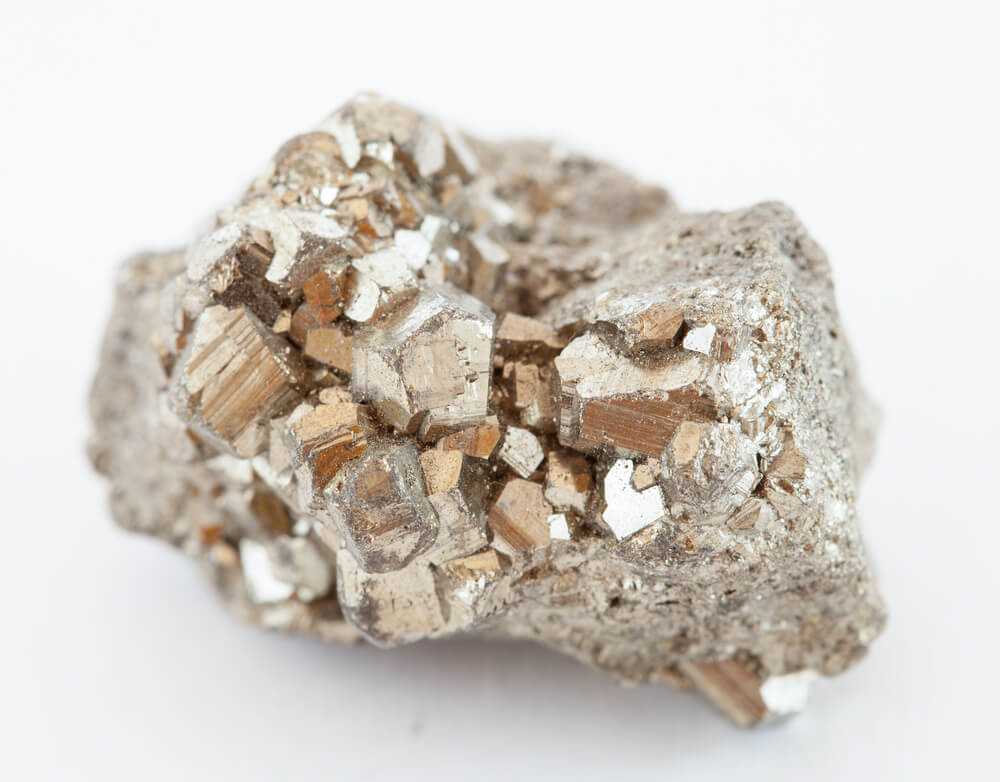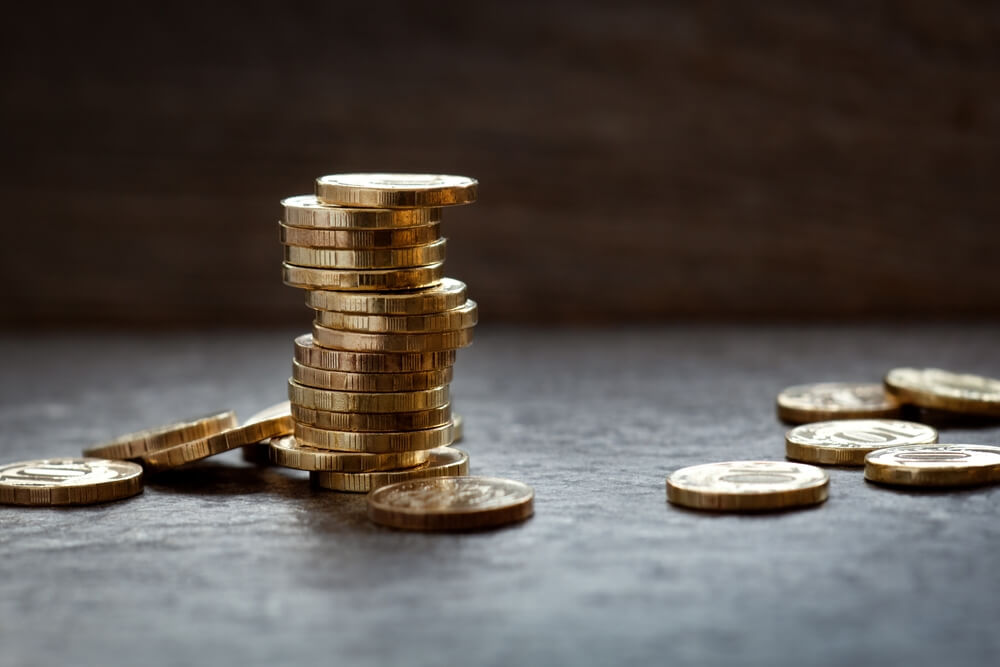
Silver IRA Investments 101: All the Silver Rules You Need to Know
When people talk about gold, silver is the other precious metal they invariably bring up in the same statement. Silver doesn’t look anything like gold. It has a whitish appearance. It also is not in the same price category as the yellow metal. But, in several other aspects, silver is a solid alternative to gold. Silver is a non-renewable source, and the earth has only so much silver to offer.
Silver, therefore, enjoys a very similar status to gold in the industrial, ornamental, and investing space. It’s a particularly sought-after metal in industries and for financial pursuits. But because physical silver is a “precious metal,” it presents storage and security challenges. Although there is the option to invest in silver without owning or holding the precious metal, that cannot beat the feeling one derives from possessing silver in the metal.

So, how does one create a balance? Get a silver IRA! A silver IRA lets you own silver in the metal form and also not worry about its storage and security concerns. Let’s explore silver IRA investments in great detail. The key topics of discussion include:
- A brief intro to silver investments
- A focus on silver IRAs
- The benefits of owning silver and some drawbacks too
- Choosing between a silver IRA or a gold IRA
- Answers to commonly asked silver investing-related questions and more
If you’ve contemplated investing in silver but have held back due to different concerns, this article may help clear the clouds and take the plunge. Read on to get to know silver IRA investments.
Table of Contents
What is a Silver Investment?
“Silver investment” is an umbrella term encompassing a wide range of silver-based investment products and asset classes. It includes both physical silver and paper/digital silver investments. A silver IRA, for instance, is a form of silver investment. A silver investment entails acquiring and amassing silver or silver-based instruments to achieve specific financial objectives—for example, capital appreciation, wealth preservation, income generation, etc.
Physical silver could be bars, coins, rounds, jewelry, etc. Silver jewelry is not as investment-friendly as bullion coins and bars but still contains valuable silver components. A silver ETF (exchange-traded fund) is an example of a digital silver investment. It tracks the value of silver, providing a convenient route to invest in the metal without owning it. The ETF holds silver in secure vaults and issues stakes representing ownership. Silver IRA is a unique form of investment marrying physical and digital silver.
Read more: How to Sell Gold and Silver
What is a Silver IRA?
A silver IRA is a precious metal IRA focused on physical silver investments. The self-directed silver IRA works just like a gold IRA but emphasizes silver. In other words, setting up and funding a silver IRA is like rolling with any other precious metals IRA. A silver IRA is an excellent way to expand your retirement accounts beyond stocks, mutual funds, bonds, and other traditional assets.
A silver or a precious metal IRA is “self-directed.” It’s called so because it falls outside the confines of traditional IRAs. But the primary reason it’s named so is that the account holder enjoys greater control over the investment decisions they make about the individual retirement account. In other words, a financial institution does not manage a silver IRA, and there’s no limit on investment choices.
Unlike a traditional IRA, a silver IRA allows investments in physical silver, including silver bars, coins, rounds, etc. The physical silver articles must meet certain IRS-set quality and purity standards to be eligible for investing. More on them later. Also, the silver bought under the retirement account is managed by a self-directed IRA custodian and held in an IRS-approved repository.
Why Own Silver (IRA) – The Benefits

The benefits of adding silver investments to a retirement portfolio are similar to adding other costly metals to a retirement savings account.
Diversification
The first and foremost is diversification. Adding silver to any retirement account helps spread its risk factors, or the portfolio’s performance is not heavily dependent on a single asset class. Since silver appreciates or performs inversely when fiat currency or paper assets lose value, it balances or lowers the damage the financial portfolio could have incurred if it purely consisted of paper-based investments (stocks, currencies, mutual funds, etc.). Precious metals like gold and silver have never been “growth drivers,” but they’ve always helped steady the boat during high financial tides, as silver costs are not correlated with stocks, bonds, and similar asset classes.
Inflation Hedge
One of the reasons gold and silver investments perform well during difficult economic periods is inflation doesn’t affect their values. Your silver and gold coins and bars will remain as worthy as when you originally bought them. Gold and silver costs will likely increase when the stock market tumbles or the paper-underpinned financial market is in trouble. Silver’s track record as a proper hedge against inflation is well-known.
Silver may not rally as much as gold, as the former is more widely used in industries. Industrial activity and the demand for silver drop when the economy enters a recession. But because its value is only partially contingent on external factors like currency notes, silver manages to hold value reasonably well overall. Not to mention, several investors like to own precious metals like silver for the “tangibility” or being able to have the thing in their hands.
Price Stability
Another key advantage of silver is itsprice stability. No, the prices of silver do not stay rock solid. But they are much less erratic than stocks, bonds, cryptocurrencies, etc. Silver is less volatile because it’s physical with inherent value. And because silver is one of the popular tangible assets with intrinsic worth, it’s not hard to resell the precious metal when needed. The innate value also means silver is usually a wealth haven asset during geopolitical instability or economic turmoil.
Decent Growth Potential
Silver has growth potential both in the short and long term. Over the years, silver and gold prices have increased. The growth trajectory may not be on par with stocks of some of the biggest companies, but it has been steady. The cost of silver hasn’t once tumbled drastically in its history, unlike share prices, not scaring the living hell out of investors. Silver could be used for short-term speculation, depending on market trends.
For instance, traders can purchase silver and sell it the same day for a profit, thanks to silver’s intraday price movements. The trading, however, entails diligence, proper analysis, an understanding of the technical trends, and discipline. An even quicker strategy is “scalping,” wherein traders profit from marginal price changes over minutes or seconds. Scalping warrants fast decision-making, accuracy, and prompt execution skills. There’s another phenomenon called “swing trading.” Traders keep silver positions for weeks to a few days to arrest price swings.
Tax Benefits
With regard to a silver IRA, there are tax benefits attached to owning the physical metal in self-directed IRAs. The tax advantages realized will vary based on the silver IRA type (Roth IRA, traditional IRA, or SEP IRA). In the case of a conventional IRA, the contributions are tax-deductible, meaning your investments grow tax-deferred. In other words, you need to remit taxes on earnings only once you begin withdrawing funds from the account.
A Roth silver IRA lets in after-tax dollars to facilitate tax-free withdrawals when you hit retirement age. This offers significant tax savings, particularly if your silver holdings’ value appreciates over time. A silver IRA’s tax benefits extend to the estate planning realm. Adding silver or any other precious metal to an IRA bodes well for legacy planning or passing on family wealth to later generations. And when the assets are passed on, they don’t go through probate, potentially decreasing estate taxes.
Certain expenses pertaining to the IRA, such as storage costs, custodial fees, etc., could be tax-deductible. Kindly note that all the aforementioned “tax benefits” hold good only if the IRA is set up and managed according to the IRS rules. Even if there’s a minor breach, the tax provisions will cease. Also, if your IRA withdrawals are taxable, your taxes will hinge on the tax bracket you fall in.
Invest in a Silver IRA or Gold IRA?
Both gold and silver IRAs come under the “precious metals IRAs” umbrella. You can, therefore, opt for either of the two or intermingle them. But if you’re purely considering a silver IRA, here are reasons to pick it over a gold IRA.
Silver is inexpensive. Silver is a no-brainer if you’re on a budget and want to start investing in precious metals for retirement. Silver is much more utilitarian, or there are more profits to make with the metal. In other words, it has more practical applications or uses than gold, potentially providing more opportunities to gain from the metal financially.
But not everything is bloomy with silver, and silver IRAs trail gold IRAs in a few aspects. As stated, silver is an industrial metal. Its industrial applications include electronics, medical devices, and solar panels. Industrial demand could influence silver values, as economic scenarios affect these products’ demand.
Silver is, therefore, not as stable as gold on the value front (more on that later). That makes gold a safer investment and better suited for diversifying a portfolio. A gold IRA is ideal for the long run. Gold’s reduced volatility offsets its high-cost barrier as you can take your time investing in more gold.
Note that a gold IRA and a silver IRA are not mutually exclusive. You can set up a precious metals IRA and invest in gold and silver simultaneously. How much of your portfolio you attach to each precious metal depends on your preferences and retirement age goals. Contact a financial expert to learn how to balance the two in your self-directed IRA account.
Silver is Not as Stable as Gold
As alluded to earlier, the prices of silver are less steady than gold. Its increased price volatility compared to gold and platinum is rooted in its different industrial applications. The metal’s industrial demand could cause fluctuations in its price in isolation, not majorly tied to monetary or economic factors that gold and platinum usually get impacted by.
Silver is much more price unstable in the short term, creating risks and opportunities for investors. On the not-so-bright side, silver investors and traders could enter and leave the market based on speculative factors and short-term trends, resulting in price fluctuations distinctive from gold. On the positive front, because silver is much more accessible, it’s easier to procure and sell the metal when the time’s right.
Besides industrial activity, another big reason silver values are relatively unstable is it’s not as scarce as gold. Silver is much more abundant in nature than gold, palladium, or platinum. In other words, it’s not as hard to mine silver when there’s increased demand than gold. Silver can be obtained through fresh mining or as a byproduct when other commodities are mined.
Silver IRA Investing Drawbacks
Another significant point of consideration is the various fees. It’s common to all precious metal IRAs and not just silver IRAs. A portion of your savings must be dedicated to setting up and running a silver IRA. The costs entail the fees you must pay to the self-directed IRA custodian, the IRS-approved depository for storage, transaction fees, and a sundry list of other expenses.
Setting Up a Silver/Precious Metals IRA
You must engage with a silver IRA company or custodian/trustee to set up a new silver IRA. The firm should be IRS-approved. The custodian’s job is to enable the buying, storing, and documenting of the silver held in the self-directed IRA account while ensuring all IRS regulations and requisites are met.
Choosing Your IRA Custodian
When looking for a self-directed IRA custodian, ensure the business is reputable and experienced in handling silver IRA accounts. Peruse their fees so that your costs to set up and manage the precious metal IRA are reasonable and do not affect your gains. Learn about the company’s IRA fee structure beforehand so you’re not in for rude surprises later.
Check the company’s ratings and reviews online, its certifications and registrations, and how good its customer support team is. Knowledgeable and prompt assistance when needed is underrated. Once you zero in on the right silver or gold IRA company, choose your IRA type (traditional, Roth, etc.). Consider your retirement objectives and taxes before picking one.
Funding the IRA
Once you’ve chosen an IRA custodian and created the IRA, fund your retirement account to buy precious metals or IRS-approved silver for the account. You could deposit fresh funds into the IRA or move money from an existing IRA or retirement account (401(k), 403(b), etc.). Transferring funds from current retirement accounts to a silver IRA is a “rollover.” A silver IRA rollover works just like a gold IRA rollover. To learn more, click here. You’ll also be required to make annual contributions.
Silver Eligibility for IRAs
The silver coins and bars purchased for a silver IRA account must be 99.5% pure at least. That means not all silver coins and bars can be added to the self-directed IRA. The bullion coins allowed include the American Eagle Silver, Canadian Maple Leaf Silver, Australian Silver Kangaroo, Austrian Silver Philharmonic, and the Chinese Silver Panda, to name a few.
Credible refiners should make the silver bars and coins eligible for a silver IRA. And buy the silver bullion from reliable sources, such as Augusta Precious Metals, American Hartford Gold, and Birch Gold Group. If you’d like to learn more about these firms, check out our reviews on our site.
The coins and bars allowed come in various sizes, particularly the latter. The range is broad, from one-ounce silver coins to up to 100-ounce bars. The bars should be 99.9% pure, at least allowed in precious metals IRAs. Besides bullion coins, particular government mints-issued proof coins are allowed in a self-directed IRA. Proof coins are minted for collectors, boasting greater finish and detail than standard bullion coins.
Rare or numismatic coins may not be permitted as their values are not easily quantifiable, and they are not likely to be in the best physical states. There could be exceptions, or some self-directed IRA custodians could be okay with letting silver coins with historicity or numismatic value, provided the coins meet specific IRS criteria.
Also, privately minted silver rounds are not accepted. Needless to say, silver jewelry, silverware, and other personal silver goods are ineligible for a silver IRA. Specific ETFs that track silver prices could sometimes be allowed in the precious metals IRA realm. Contact your IRA custodian for confirmation.
Storing the IRA Silver
The silver bought under the precious metals IRA must be housed in a safe, secure, IRS-approved depository. The repositories are insured and employ advanced security measures to safeguard the precious metals. Needless to say, storing your IRA silver assets outside an approved storage space will make them ineligible for inclusion in your existing IRA account.
Check the depository has sufficient insurance coverage to protect your silver holdings against its total value. The insurance must safeguard against loss, theft, or damage. Seek regular reports and statements on your holdings. Review the documents to ensure correctness and track your investments’ performance. Those storage statements will be helpful when reporting your physical precious metals’ value each year.
Distributions
Regarding distribution requirements, you can start withdrawals from the precious metals IRA after you turn 59.5 years old. Early withdrawal penalties and regular income taxes shall apply if you withdraw before that. An early withdrawal may not attract standard income tax rates in exceptional scenarios, such as for certain medical costs or when buying a maiden home.
Funds withdrawals don’t become mandatory as soon as you turn 59.5. But they do when you’re 72. At that age, you must take yearly minimum distributions from the IRA, called required minimum distributions (RMDs). The RMD sum is computed based on your life expectancy and account balance. If it’s a Roth IRA, RMDs don’t apply during the account’s lifetime. In other words, the funds can stay in the IRA account for any period of time, and there are zero age-based distribution obligations.
Beneficiaries
Do not forget to choose your IRA account’s beneficiaries. It’s imperative for estate planning, which ensures the assets get passed on the way you wanted after your demise. When setting up a silver IRA, exercise the option to designate one or multiple beneficiaries that will inherit the account’s assets upon your passing. The beneficiaries could be individuals, charities, trusts, or other entities.
The beneficiaries could be primary or contingent. The primary recipient is first in line to inherit the self-directed IRA assets after your death. There could be one or more primary beneficiaries. If there are multiple of them, indicate the share or percentage of the proceeds for each. If you want particular entities or individuals receiving certain assets, which includes your precious metal IRA, let your will’s specifics declare that. If the primary beneficiary passes before you or cannot inherit the assets for some reason, the contingent or secondary beneficiary shall step in.
The primary beneficiary is usually the spouse of a married IRA holder. Spouses can treat the precious metals IRA like their own, letting them delay the RMDs until they become old enough to retire. This provision is only available to spouses. Alternatively, a spouse could inherit the precious metal IRA as a beneficiary. In that case, RMDs must start flowing when the dead spouse ages 72. If the deceased partner is younger, RMDs can begin when the living spouse turns 72.
The rules overseeing the inherited IRA's distribution differ for the dead account holder’s children, grandkids, relatives, trusts, charities, etc. Non-spousal beneficiaries must take RMDs by December 31 or the last day of the year, which follows the account holder’s death. Distributions should start by December 31 of the calendar year the IRA account holder would have turned 73. All funds from the account should be withdrawn by the last day of the 10th year after the original IRA owner’s passing.
Silver IRA Strategies
Although silver is relatively inexpensive, it’s still a precious metal and not available at throwaway prices. And the costs go up with the quantity of silver. If investing in silver seems out of bounds, start in small increments. Consistently invest regularly in a fixed sum of cash in silver, irrespective of the price. The particular approach will help you amass silver assets over a period.
Review your precious metals IRA and investment portfolio as a whole. If the price of silver has increased considerably, rebalance things by selling a few silver assets and using the realized cash to invest in other investment vehicles. Stay atop silver market trends, news, and other things influencing the value of silver. Read the news and learn about the world economy, monetary policies, geopolitical events, etc., since they could affect silver or the precious metals markets.
Read more: Sterling Silver vs. White Gold
Conclusion
Silver isn’t the best at hedging inflation. It is also not as rare as gold. Then why should you purchase precious metals like silver or invest in them? Because silver is relatively affordable compared to gold and other precious metals. It’s not called “poor man’s gold” for no reason. Silver is a no-brainer if you have a small investing budget and want your money parked in precious metals to diversify your portfolio.
Although silver is not on par with gold on the reliability front, its price movements are not as unstable as traditional assets such as stocks or bonds. Silver is not as scarce as gold, but that doesn’t mean it has zero capital appreciation potential. And those who buy silver at the right time can benefit from the price movements. Silver’s universal appeal may not be comparable to gold, but it’s undoubtedly valuable. Therefore, if you like buying precious metals and silver is on your radar, go ahead and invest in the metal. Preferably, buy silver and do it under the aegis of a silver IRA. The level of security the self-directed IRA purchases afford cannot be achieved when buying physical gold, silver, platinum coins, etc., through other means. Please read our other articles to learn more about silver or gold IRAs, gold IRA providers, etc. Get started with this deep dive into IRA-approved silver.
FAQs
What is the difference between a silver IRA and a traditional IRA?
A silver IRA is not much different from a traditional or regular IRA in its functions, minimum investment requirements, etc. The only significant difference is the former allows silver into its fold, which the latter doesn’t permit. And because you are dealing with the silver metal, a proper storage arrangement is needed, which does not apply to traditional IRAs. Note that a silver IRA could be “traditional” or “Roth,” which deals with when and how the taxes apply.
How much silver should be in your investment portfolio?
Silver is an excellent way to diversify a portfolio teeming with stocks, bonds, and other traditional financial assets. But like they say, too much of a good thing is bad. Excessive silver investments can burden any retirement portfolio and stem its growth. Keep your silver assets below 5% of your portfolio’s value. If you have gold and other precious metals, the silver’s quota should go down further. Your investment/retirement kitty’s precious metal content shouldn’t be more than 10%.
Can a silver IRA have other precious metals or valuable assets?
Yes, a silver IRA could comprise non-silver precious holdings such as gold bars, platinum bullion coins, real estate, etc. It’s not rare for gold, silver, platinum, palladium, etc., to be added to a silver IRA. The term “silver IRA” is more symbolic than literal. The primary focus, however, is on metals, and the significant component is silver. If there’s silver in the IRA than another precious metal, the name would cease to exist.
Do silver and gold cancel out each other in the same retirement portfolio?
No, silver and gold are not exact substitutes. They could be part of the same precious metals IRA or portfolio and still serve distinct purposes. Contrary to general perception, silver’s price dynamics differ from gold, platinum, etc., which means increased diversification benefits.
When should you withdraw your silver IRA?
There’s no right time to withdraw your silver IRA funds. It varies based on the individual. If retirement savings were the sole objective, drawing funds at 59.5 makes complete sense. If you are planning to retire later, you can defer withdrawals accordingly.
If, however, you have specific financial goals, such as funding a kid’s education or buying a house, the timing can differ. Market scenarios could also determine the timing. Monitor prices of silver and the general industry so you can cash in at the most opportune time.
What are some major industrial applications of silver?
Silver plays a big part in different industries. It’s a key component in solar PV (photovoltaic) cells. The silver paste helps make electrical connections inside PV cells, converting sunlight into electricity. Silver is used in supercapacitors, batteries, etc., which help store surplus energy derived from renewable sources, ensuring a steady clean energy supply.
Silver’s antimicrobial traits render it handy in water purification setups. It’s employed in membranes, filters, coatings, etc., to decontaminate and disinfect water, helping to offer clean and safe drinking water. Silver’s antimicrobial and antibacterial qualities are also used in medical equipment. The precious metal is used in products that help mitigate infections and facilitate healing.
When traditional cameras were the norm, silver was in great demand in the camera industry since several million ounces of it were used to produce photographs. In 1999, approximately 268 million ounces were used. Silver usage in photography mainly revolves around its light sensitivity. After more than two decades, that number dropped to 46.5 million, thanks to the advent of digital photography. Other usages, however, have emerged to offset that decline, particularly in the energy sector.
Do central banks invest in silver?
Central banks may hold stashes of silver, but they prefer gold more since the latter is likely to retain its worth through turbulent periods. Silver is usually never or not a significant component of central banks’ monetary policies or foreign exchange reserves. Banks tend to hold gold even when the economy seems healthy. That’s because the precious metal has a de facto “global currency” image.
Gold can bail banks out of debt. Silver is unreliable on that front due to its more significant value fluctuations. Gold has a large market size and enjoys greater liquidity. For banks that manage huge and rapidly shuffling reserves, the increased liquidity of gold helps keep things moving. Long story short, central banks fancy their investments to be safe and reliable, and silver doesn’t fit the bill, especially when compared to gold.


